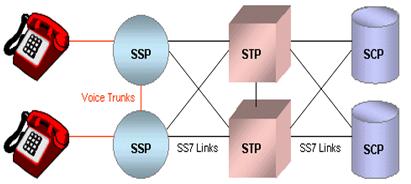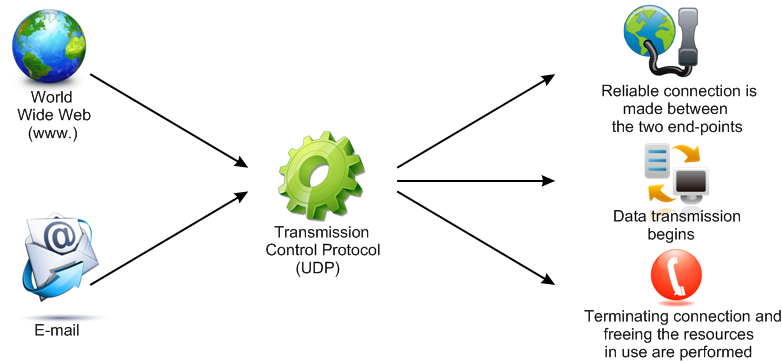
Image Sourced from Pexels
As your business grows, there are many elements of administration and infrastructure that you should take into account.
One of these is toll-free numbers. They are not always the most exciting part of your enterprise journey. But they are a useful part of scaling up and maintaining proper customer communication.
Though sometimes considered outdated, toll-free numbers can be an important part of digital marketing for startups and other rapidly growing businesses.
This comprehensive guide will highlight the ins and outs of setting up a toll-free number. You’ll learn why doing so is a necessary step on your path to doing, as they say, big business.
What is a toll-free number?
Dealing with customers is a crucial aspect of your business. Phone calls are still one the most common ways for customers to get in touch.
You will have noticed that many business numbers start with a three-digit number beginning with ‘8’. These are the ‘toll-free codes’. Normally with phone calls, whoever makes the call pays for it. But with toll-free numbers, the owner of the number, i.e. you, covers both incoming and outgoing calls.
Businesses use toll-free numbers so customers, clients, and prospects can call in for free. The original toll-free code was ‘800’, released in 1966 by AT&T in the United States, although there were forms of toll-free numbers before this.
Toll-free numbers have since gone international and are often referred to as freephone numbers in other countries. Most toll-free numbers are considered local numbers in the United States. This means calls originating there will be less expensive on the whole.
The system proved popular, and in 1996, ‘888’ was added to the repertoire after the ‘800’ prefix was depleted. Demand continued to soar, and between then and now, five more toll-free codes have been added — 877, 866, 855, 844, and 833.
So, how does a toll-free number work? Once a customer makes the call, the Service Switch Point (SSP) recognizes the toll-free number by its 800 or other prefixes. The SSP then queries the Service Control Point (SCP), asking the SSP where it should route the call to. Once the SCP finds the destination registered to that toll-free number, the call goes through.

Image Sourced from hererafridayanti.wordpress.com
Why do you need a toll-free number?
A toll-free number is one of the signs of an established business, like in dropshipping line that sell products sourced from a supplier. They are associated with larger businesses and signal to the outside world that you’re more than a living room operation. They also make it easier for others to get in touch.
You’ll come across as far more professional and credible if you can give customers a landline number instead of a mobile number. It will also help you separate between professional and personal calls, protecting your privacy on top. Even if you don’t have an actual landline, toll-free systems can allow you to forward calls to your mobile phone.
If customers can call for free, they are far more likely to dial in about potential purchases, which will increase your revenue. This kind of simple CRM can accelerate your business growth. It will also allow you to resolve customer service issues more frequently. This will stop dissatisfied customers from simply turning away.
Toll-free systems are also designed to let you reroute calls conveniently. This means your various departments can easily receive calls from a single number. Toll-free numbers are also available 24/7. If no one is available, you can automatically reroute calls to different departments or different time zones.
Many businesses take advantage of toll-free codes to make their number more memorable. These so-called vanity numbers are either very easy to remember or numbers that spell out words when typed. Vanity numbers are far more impactful than regular numbers. They are an effective marketing tool to increase the rate of inbound traffic and, by extension, potential leads and customers.
Some companies want generic vanity numbers, like 1-800-MORTGAGE, and find that these are often taken. This should not be a large concern. Numbers which include the benefit can be more persuasive, 1-800-QUICKLOAN, for example. In some cases, companies can also get toll-free numbers with their own name, like 1-800-MICROSOFT.
Famous examples of vanity numbers include 1-800-Go-FedEx by, you guessed it, Fedex and 1-800-Flowers. The latter was set up by American entrepreneur James McCann in 1976 for his company 1-800-Flowers. Yes, James really went all in on the vanity number. He built a billion-dollar brand based on a toll-free number!

Image Sourced forbes.com
How can you set up a toll-free number?
Toll-free numbers are straightforward and easy to set up. In fact, they are so common that toll-free providers assume that businesses already understand the benefits of the service. As a result, they don’t do much publicizing of some of the features and benefits that toll-free numbers have.
Other forms of communication like SMS and email have grown since the advent of toll-free numbers. However, many people still like to contact businesses by phone call, especially when they want an instant or timely response.
There’s no need to feel like you’re stuck in the past, though. In the 21st century, toll-free systems have undergone a digital transformation. Many providers now link their toll-free systems to other services like voice-over-internet protocol (VoIP).
VoiP calls pass through the internet rather than through the usual telephone infrastructure. This way, the extra termination costs all but vanish.

Image Sourced from commons.wikimedia.org
VoIP systems offer many other features. These include the ability to take calls anywhere with an internet connection, the use of custom caller IDs, and machine data analytics, among others.
Some voip phone systems also include data analytics as a built-in feature. This will allow you to keep track of call lengths and locations. You can also use specific toll-free numbers for different marketing channel campaigns. This allows you to measure their success against each other. Effective tracking will allow you to double down on what works and discard the duds.
To manage call routing within your organization efficiently, you’ll also need a private branch exchange (PBX). Traditional PBX systems still exist. But, like VoIP, cloud PBX systems use the internet. This reduces cost and improves efficiency thanks to a whole host of digitally enhanced features.
Where can you use toll-free numbers?
One of the brilliant features of toll-free numbers is that they are portable. If you ever need to move offices or expand to a new address, county, state, or state, you can do so and keep the same number. The toll-free system is largely international, with many countries using the same codes.
This also means that you can receive calls from anywhere in the world, particularly useful if you have customers across the globe.
Bear in mind that the cost will vary greatly depending on the country the call is coming in from. Some countries also charge different rates depending on whether the call comes from a landline or mobile. This is especially true in European countries.
How much do toll-free numbers cost?
While footing the bill for others might sound expensive, it doesn’t have to be. Many business-oriented providers include the option for toll-free numbers at reduced rates.
As with other business phone systems, toll-free number costs depend on the amount of ‘talk time’ you rack up. There’s no reason to go all out on reducing call length, though. Many providers offer plans which reduce the per-minute cost of calls depending on the volume you are expecting.
Don’t just look into phone companies’ offerings. Many third-party organizations also offer toll-free numbers as part of their communications suite. While price is an important consideration, don’t forget to look at what specific features are on offer.
There can be quite a lot of nuance in the services companies offer, so be sure not to back yourself into a corner. Consider if the features align more broadly with your marketing and communications strategy. Some providers even offer features like forwarding voicemails to your email system, highlighting the role of transcription services in modern commerce.

Image Sourced from explainthatstuff.com
As your operation scales, make sure to take advantage of these kinds of discounts. Be prepared to switch providers if necessary.
Thanks to a ruling by the FCC in 1991, toll-free numbers are fully portable, meaning you can switch providers and keep the same number. Before that, businesses were stuck with their original provider if they wanted to keep the same number. They couldn’t switch even if they were dissatisfied with the service or rates.
Another key factor to take into account is ‘call-termination’. This refers to the final destination of the call — where it’s answered after forwarding. Different countries have different rates depending on where the call ends up. If you want the call forwarded to a mobile phone, for example, this is generally more expensive.
The Journey to Toll-freedom
Now you have the perfect playbook for setting yourself up with a toll-free number; your company could have better process improvement strategies. Customers will be more willing and able to contact you from anywhere in the world at any given time.
If you pick the right number, perhaps accompanied by a catchy jingle, your company might even be stuck in their heads throughout the day.
Don’t worry if you don’t find the ideal vanity number immediately. It’s easy to register new numbers in the future once you come across a set of digits that capture the essence of your offering.



